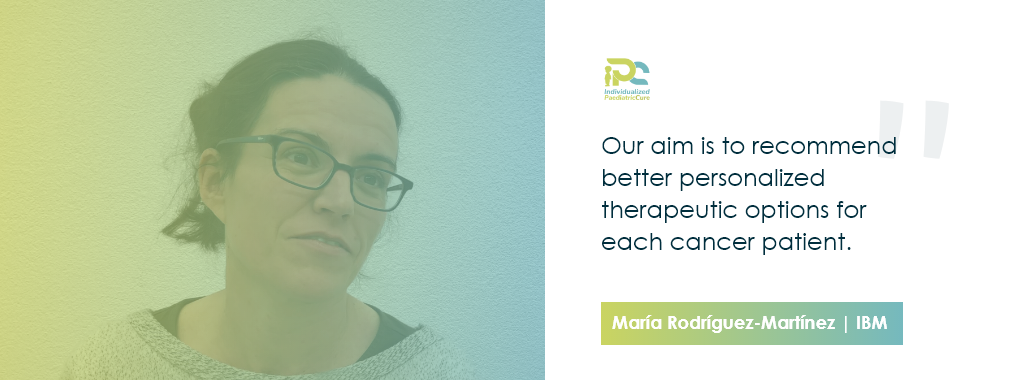Today in a talk with María Rodríguez-Martínez – 5 questions about herself and the iPC H2020 project.
Introduce yourself and tell us a bit about your background.
I am a physicist by training and I started doing high energy cosmology. Around 15 years ago, I switched to system biology and I have been working ever since in the interface of biology as a quantitative scientist. In recent years I have been working more on the computational aspects of analysing multi-omics high throughput data in the context of cancer.
What is your title and/or role in the project?
I am the technical coordinator of iPC – I like to see myself as a person who coordinates the technical work of the partners to make sure that we work together towards achieving the goals that we have promised. I am also the leader of the WP focused on Big Data analysis, where we will apply scalable techniques to integrate diverse, already existing large data sets
What are your contributions to the project? (Specify what deliverables and/or tasks you are responsible for)
One of the main pillars of iPC is the exploitation of available data. And this data often is quite large in size. In iPC we need to apply the specific big data techniques that can be, for example, text data. That means data is extracted from medical publications or large molecular data sets are analysed and integrated to strengthen the quality of our predictions. I am the technical leader of work package 3 – that means that I will be directly working on this work package but also coordinating the tasks of other partners also developing large scale analytics.
In addition, I also work in and collaborate with other WPs. For instance, in recent years the whole community is becoming increasingly aware of the importance of taking into cancer heterogeneity to properly model the disease. What that means is that tissues and biomedical samples extracted from cancer patients, even from the same cancer patient, are extremely diverse. If we do not take this heterogeneity into account, we might miss important information to treat the patient in an optimal way. To address this challenge, there has been a lot of effort towards the development of new single cell technologies that may allow us to look at cells one by one. This data can be either single cell proteomics or single cell transcriptomic or ideally both of them from the same patient. Such data will enable us to understand what is similar and what is different in each cancer cell, hence, giving insight into molecular mechanisms underlying the disease. We will also be able to identify communities of cells with similar clinical characteristics, e.g. metastatic potential, response to therapy, etc.
What challenges can you foresee in the project?
- Data accessibility: The consortium includes many computational partners, however we will need data to work on. Currently, many of the newly developed datasets that contain a lot of rich information about the disease and the patients are protected and difficult to access. This is a particularly sensitive topic because we will be working with children’s data and the protection laws are more strict than for adult data.
- Data availability: Paediatric cancers are fortunately less common than adult cancers, which means that we have less data to work with. One idea we will explore is to combine both paediatric and adult datasets to understand both sides of the spectrum and identify what is common and what is different.
How do you think the project outcome could affect our daily life?
I do not think we could cure cancer in 4 years. I think, however, what we are doing is extremely important and we will have a great impact. So far, especially in the paediatric cancer community, there is no shared knowledge available, which makes progress slow. I am truly convinced that by joining forces, sharing data of different cancer types and bringing together an interdisciplinary team – that means having computational partners, clinicians, biologists or engineers – we will make a positive impact and accelerate knowledge discovery. And hopefully this will have an impact on children’s lives. We might not be able to cure cancer in 4 years, but we can definitely improve the therapy recommendations, for instance, by recommending less aggressive therapies for more benign tumour types, thus minimising short and long-term side effects.
